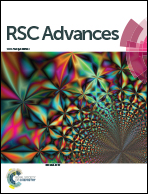A novel fullerene oxide functionalized silica composite as stationary phase for high performance liquid chromatography
Abstract
Hydrophilic interaction liquid chromatography has been widely used for separating hydrophilic compounds and the development of new stationary phases for HILIC is significant. In this study, fullerene oxide was successfully assembled onto silica microspheres to form a FO-modified silica stationary phase. The synthesized material was characterized by elemental analysis, transmission electron microscopy, Raman spectroscopy and contact angle analysis. The chromatographic properties of the stationary phase were investigated in HILIC mode for analysis of nucleosides, nucleobases, water soluble vitamins, amino acids and saccharides. Good separations of these compounds were achieved on the resulting column. Compared with the aminopropylated silica column, FO/SiO2 column exhibited better separation efficiency. This study also investigated the effect of various experimental factors on the retention of the polar stationary phases, such as acetonitrile content and salt concentration in the mobile phase.


 Please wait while we load your content...
Please wait while we load your content...